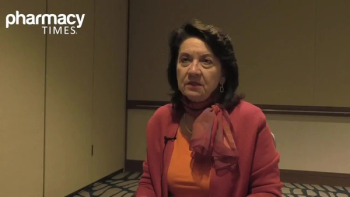
The JNC 8 Hypertension Guidelines: An In-Depth Guide
Compared with previous hypertension treatment guidelines, the JNC 8 guidelines advise higher blood pressure goals and less use of several types of antihypertensive medications.
Compared with previous hypertension treatment guidelines, the JNC 8 guidelines advise higher blood pressure goals and less use of several types of antihypertensive medications.
Patients will be asking about the new Joint National Committee (JNC 8) hypertension guidelines, which were published in the Journal of the American Medical Association on December 18.
The new
Do you think the JNC 8 guidelines will significantly change how hypertension is treated? Let us know by voting in our
Important changes from the JNC 7 guidelines include the following:
- In patients 60 years of age or older who do not have diabetes or chronic kidney disease, the goal blood pressure level is now <150/90 mmHg
- In patients 18 to 59 years of age without major comorbidities, and in patients 60 years of age or older who have diabetes, chronic kidney disease, or both conditions, the new goal blood pressure level is <140/90 mmHg
- First-line and later-line treatments should now be limited to 4 classes of medications: thiazide-type diuretics, calcium channel blockers (CCBs), ACEIs, and ARBs
- Second- and third-line alternatives included higher doses or combinations of ACEIs, ARBs, thiazide-type diuretics, and CCBs
- Several medications are now designated as later-line alternatives, including the following: Beta-blockers Alpha-blockers Alpha1/beta-blockers (eg, carvedilol) Vasodilating beta-blockers (eg, nebivolol) Central alpha2-adrenergic agonists (eg, clonidine) Direct vasodilators (eg, hydralazine) Loop diuretics (eg, furosemide) Aldosterone antagonists (eg, spironolactone) Peripherally acting adrenergic antagonists (eg, reserpine)
- When initiating therapy, patients of African descent without chronic kidney disease should use CCBs and thiazides instead of ACEIs
- Use of ACEIs and ARBs is recommended in all patients with chronic kidney disease regardless of ethnic background, either as first-line therapy or in addition to first-line therapy
- ACEIs and ARBs should not be used in the same patient simultaneously
- CCBs and thiazide-type diuretics should be used instead of ACEIs and ARBs in patients over the age of 75 with impaired kidney function due to the risk of hyperkalemia, increased creatinine, and further renal impairment
The change to a more lenient systolic blood pressure goal may be confusing to many patients who are accustomed to the lower goals of JNC 7, including the <140/90 mmHg goal for most patients and <130/80 mmHg goal for patients with hypertension and major comorbidities.
Results of 5 key trials--HDFP, Hypertension-Stroke Cooperative, MRC, ANBP, and VA Cooperative--informed the changes in the new guidelines. In these trials, patients between the ages of 30 and 69 received medication to lower DBP to a level <90 mmHg. Results showed a reduction in cerebrovascular events, heart failure, and overall mortality in patients treated to the DBP target level.
The data were so compelling that some members of the JNC 8 panel wanted to keep DBP <90 mmHg as the only goal among younger patients, citing insufficient evidence for benefits of an SBP goal lower than 140 mmHg in patients under the age of 60. However, more conservative panelists pushed to keep the target SBP goal as well as the DBP goal.
In younger patients without major comorbidities, elevated DBP is a more important cardiovascular risk factor than is elevated SBP. The JNC 8 panelists are not the first guideline authors to recognize this relationship. The JNC 7 guideline authors also acknowledged that DBP control was more important than SBP control for reducing cardiovascular risk in patients <60 years of age. However, in patients 60 years of age and older SBP control remains the most important factor.
Other recent evidence suggests that the SBP goal <140 mmHg recommended by the JNC 7 guidelines for most patients may have been unnecessarily low. The JNC 8 guideline authors cite 2 trials that found no improvement in cardiovascular outcomes with an SBP target <140 mmHg compared with a target SBP level <160 mmHg or <150 mmHg. Despite this finding, the new guidelines do not disallow treatment to a target SBP <140 mmHg, but recommend caution to ensure that low SBP levels do not affect quality of life or lead to adverse events.
The shift to a DBP-based goal may lead to use of fewer medications in younger patients with a new diagnosis of hypertension and may improve adherence and minimize adverse events associated with low SBP, such as sexual dysfunction.
Patients with Kidney Disease
Although 1 post-hoc analysis showed a possible advantage in kidney outcomes with the lower target of 130/80 mmHg recommended by JNC 7, 2 other primary analyses did not support this finding. Additionally, another 3 trials did not show an advantage with the <130/80 mmHg goal over the <140/90 mmHg goal level for patients with chronic kidney disease. As a result, the new guidelines recommend that patients with chronic kidney disease receive medication sufficient to achieve the higher <140/90 mmHg goal level.
However, in an exception to this goal level, the guidelines suggest that patients with chronic kidney disease or albuminuria aged 70 years or older should receive treatment based on comorbidities, frailty, and other patient-specific factors. Evidence was insufficient to support a goal blood pressure of <140/90 mmHg in patients over the age of 70 with chronic kidney disease or albuminuria.
Patients with Diabetes
Adults with diabetes and hypertension have reduced mortality as well as improved cardiovascular and cerebrovascular outcomes with treatment to a goal SBP <150 mmHg, but no randomized controlled trials support a goal <140/90 mmHg. Despite this, the panel opted for a conservative recommendation in patients with diabetes and hypertension, opting for a goal level of <140/90 mmHg in adult patients with diabetes and hypertension rather than the evidence-based goal of <150/90 mmHg.
Follow-up
The JNC 8 guideline authors simplified a complicated recommendation for follow-up in patients with hypertension. The JNC 7 panel recommended that after an initial high blood pressure reading, follow-up with a confirmatory blood pressure reading should occur within 7 days to 2 months, depending on how high the initial reading was and whether or not the patient had kidney disease or end-organ damage as a result of hypertension. Under JNC 8, in all cases, goal blood pressure targets should be reached within a month of starting treatment either by increasing the dose of an initial drug or by using a combination of medications.
Treatments
Like the JNC 7 panel, the JNC 8 panel recommended thiazide-type diuretics as initial therapy for most patients. Although ACEIs, ARBs, and calcium channel blockers (CCBs) are acceptable alternatives, thiazide-type diuretics still have the best evidence of efficacy.
The JNC 8 panel does not recommend first-line therapy with beta-blockers and alpha-blockers due to 1 trial that showed a higher rate of cardiovascular events with use of beta-blockers compared with use of an ARB, and another trial in which alpha-blockers resulted in inferior cardiovascular outcomes compared with use of a diuretic. In addition, a lack of evidence comparing the 4 first-line therapies with carvedilol, nebivolol, clonidine, hydralazine, reserpine, furosemide, spironolactone, and other similar medications precludes use of any medications other than ACEIs, ARBs, CCBs, and thiazide-type diuretics in the vast majority of patients.
Before receiving alpha-blockers, beta-blockers, or any of several miscellaneous agents, under the JNC 8 guidelines, patients would receive a dosage adjustment and combinations of the 4 first-line therapies. Triple therapy with an ACEI/ARB, CCB, and thiazide-type diuretic would precede use of alpha-blockers, beta-blockers, or any of several other agents.
These new guidelines all but eliminate use of beta-blockers (including nebivolol), alpha-blockers, loop diuretics, alpha1/beta-blockers, central alpha2-adrenergic agonists, direct vasodilators, aldosterone antagonists, and peripherally acting adrenergic antagonists in patients with newly diagnosed hypertension. Caution is warranted in patients who are already stable on these therapies.
Special Therapeutic Considerations
ACEIs and ARBs may not be an ideal choice in patients of African descent. Results of a subgroup analysis in the Antihypertensive and Lipid Lowering Treatment to Prevent Heart Attack Trial (ALLHAT) found that ACEIs led to worse cardiovascular outcomes than thiazide-type diuretics or CCBs in patients with African ancestry. Despite the subgroup analysis of ALLHAT, results of the African American Study of Kidney Disease and Hypertension (AASK) support use of first-line or add-on ACEIs to improve kidney-related outcomes in patients of African descent with hypertension, chronic kidney disease, and proteinuria.
As a result, the JNC 8 panelists recommend that all patients with chronic kidney disease and hypertension, regardless of ethnic background, should receive treatment with an ACEI or ARB to protect kidney function, either as initial therapy or add-on therapy.
One exception to the use of ACEIs or ARBs in protection of kidney function applies to patients over the age of 75. The panel cited the potential for ACEIs and ARBs to increase serum creatinine and produce hyperkalemia. As a result, for patients over the age of 75 with decreased renal function, thiazide-type diuretics or CCBs are an acceptable alternative to ACEIs or ARBs.
In addition, the panel expressly prohibits simultaneous use of an ACEI and an ARB in the same patient. This combination has not been shown to improve outcomes. Despite the fact that the 2 medications work at different points in the renin-angiotensin-aldosterone system, other combinations of medications are better options, and the simultaneous use of ACEIs and ARBs is not supported by evidence.
Lifestyle Changes
As in JNC 7, the JNC 8 guidelines also recommend lifestyle changes as an important component of therapy. Lifestyle interventions include use of the Dietary Approaches to Stop Hypertension (DASH) eating plan, weight loss, reduction in sodium intake to less than 2.4 grams per day, and at least 30 minutes of aerobic activity most days of the week. In addition, to delay development of hypertension, improve the blood pressure—lowering effect of existing medication, and decrease cardiovascular risk, alcohol intake should be limited to 2 drinks daily in men and 1 drink daily in women. Note that 1 drink constitutes 12 ounces of beer, 5 ounces of wine, or 1.5 ounces of 80-proof liquor. Quitting smoking also reduces cardiovascular risk.
Conclusion
The JNC 8 guidelines move away from the assumption that lower blood pressure levels will improve outcomes regardless of the type of agent used to achieve the lower level. Instead, the JNC 8 guidelines encourage use of agents with the best evidence of reducing cardiovascular risk. In addition, the guidelines may lead to less use of antihypertensive medications in younger patients, which will produce equivalent outcomes in terms of cardiovascular events with less potential for adverse events that limit adherence.
Newsletter
Stay informed on drug updates, treatment guidelines, and pharmacy practice trends—subscribe to Pharmacy Times for weekly clinical insights.

















































































































































































































